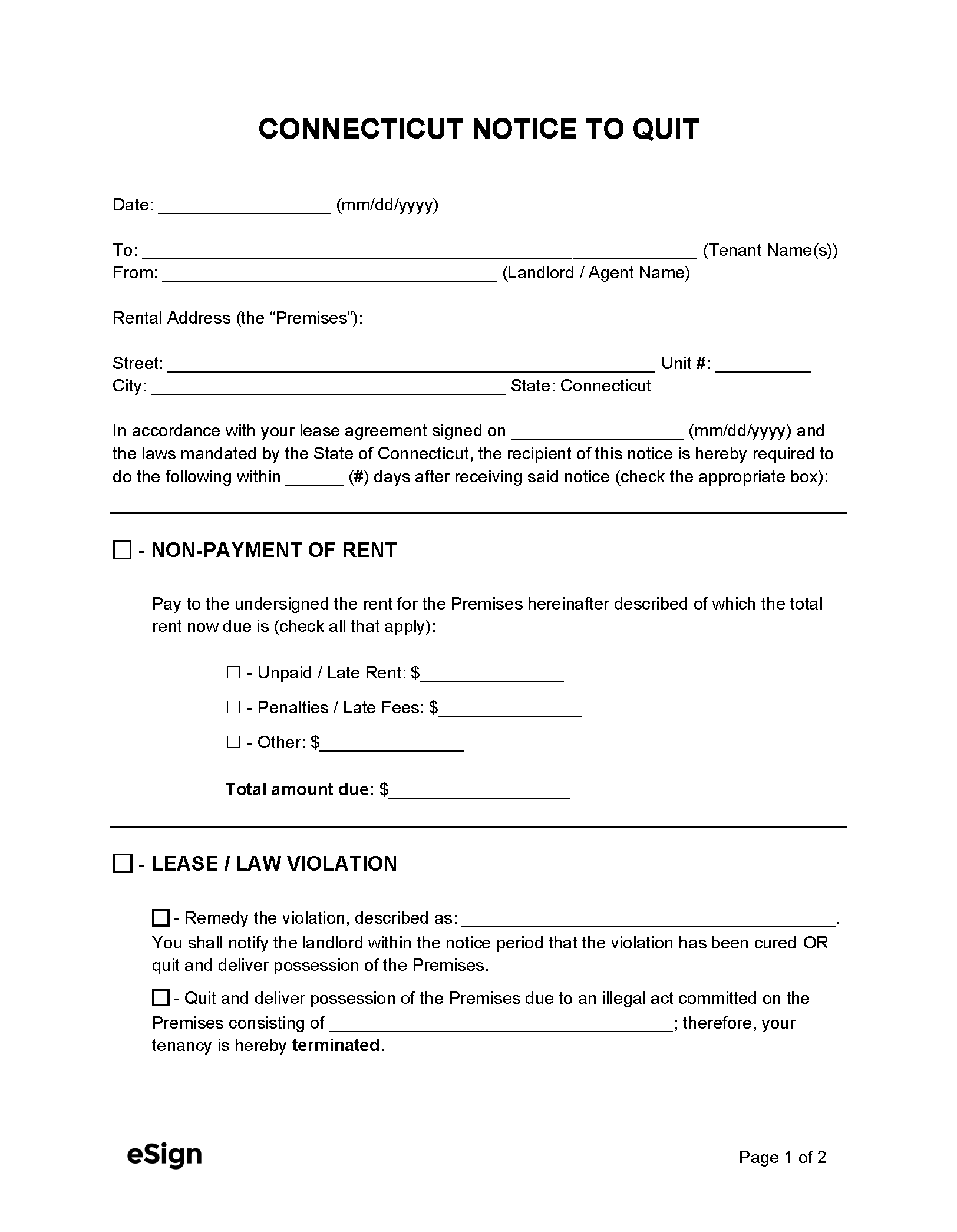Eviction Notices: By Type (3)
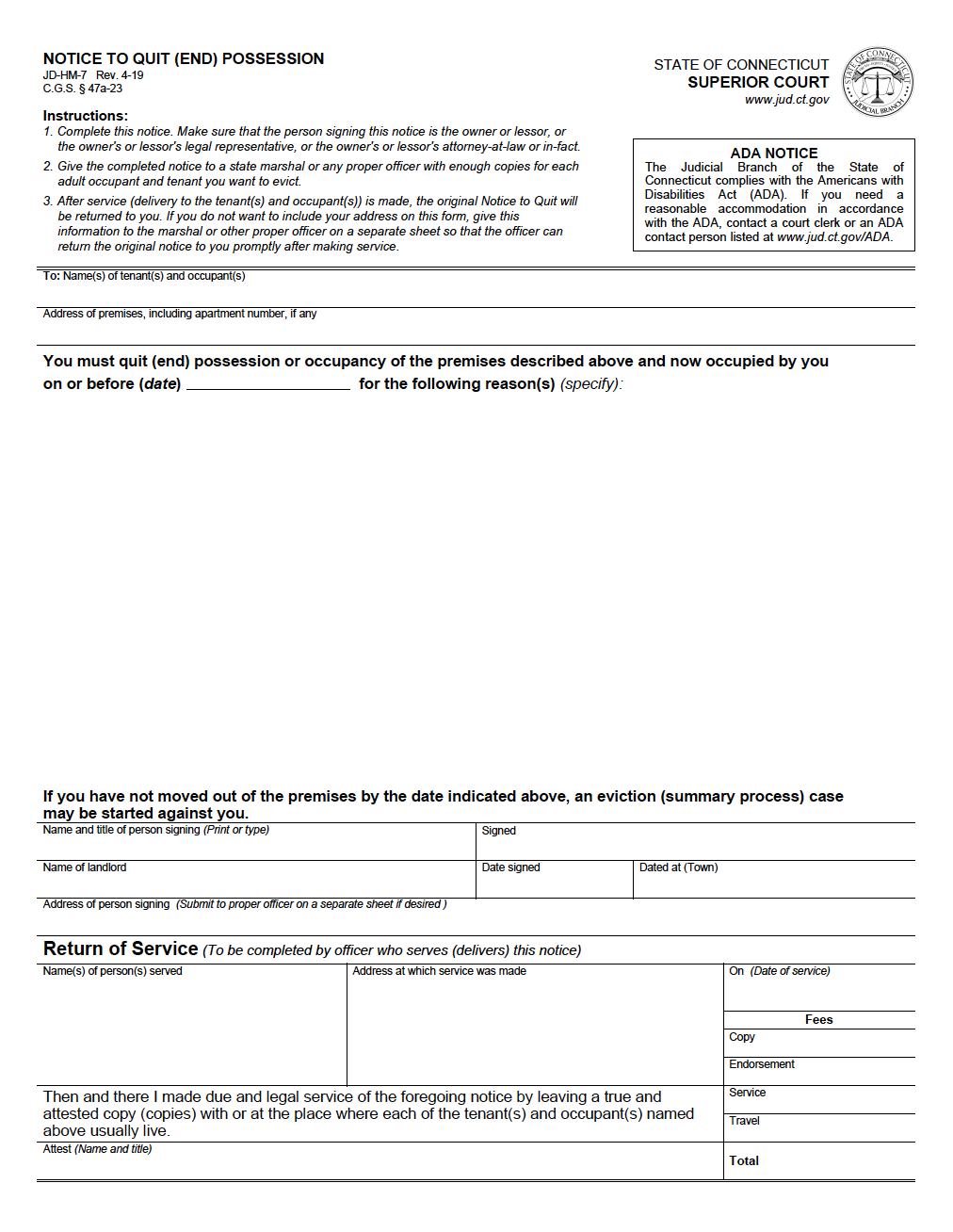
3-Day Notice to Quit | Non-Payment/Non-Compliance – An incurable eviction notice demanding that the tenant vacate the premises within the 3-day notice period.
|
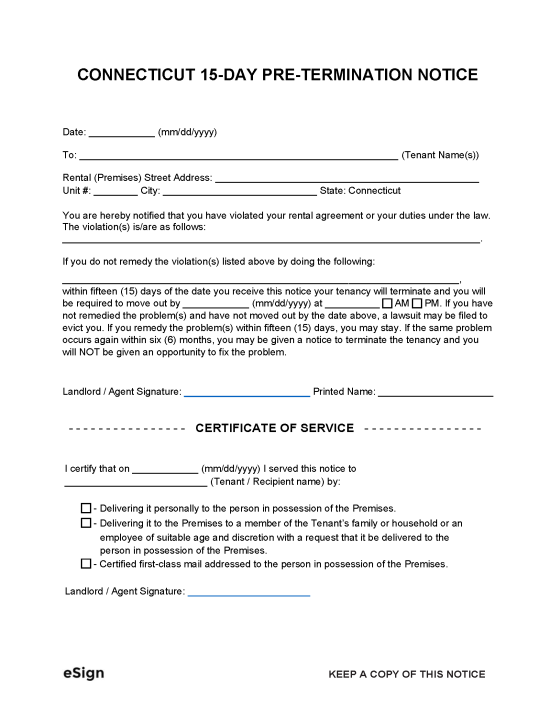 15-Day Pre-Termination Notice – This document informs a tenant that they have 15 days to remedy a material non-compliance. 15-Day Pre-Termination Notice – This document informs a tenant that they have 15 days to remedy a material non-compliance.
Download: PDF, Word (.docx), OpenDocument |
 Notice to Terminate | Month-to-Month Lease – Used to notify a tenant that the landlord intends to terminate a month-to-month lease. Notice to Terminate | Month-to-Month Lease – Used to notify a tenant that the landlord intends to terminate a month-to-month lease.
Download: PDF, Word (.docx), OpenDocument |
Notice Requirements
How to Evict a Tenant in Connecticut
Step 1 – Pre-Termination Notice (If Applicable)
If the tenant has committed a violation that can be remedied by repairs or payment for damages, the landlord must first send them a 15-Day Pre-Termination Notice. The tenant must fix the violation or move out within the 15-day notice period; after this notice period, a 3-Day Notice to Quit can be delivered.
Step 2 – Download Notice to Quit
To inform a tenant that they are in violation of their lease, the landlord must have a state marshal deliver a 3-Day Notice to Quit (Form JD-HM-7) along with a Right to Counsel Notice. The tenant has three days to vacate the premises or an eviction lawsuit can be filed against them.
Step 3 – File Summons and Complaint
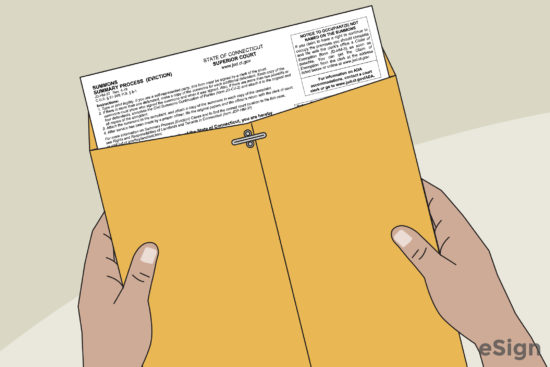
If the tenant doesn’t comply with the notice to quit, the landlord can start the eviction process (also known as a summary process). They will have to complete a Summons (Form JD-HM-32) and the appropriate complaint form:
- Complaint – Nonpayment of Rent (Form JD-HM-8)
- Complaint – Termination of Lease by Lapse of Time (Form JD-HM-20)
- (For any other violation, the landlord must draft their own complaint form.)
The Summons, Complaint, and Notice to Quit (with a Return of Service) must be presented to the court clerk at the superior court in the county where the property is located. The clerk will sign the Summons, set a return date, and return the forms to the landlord.
Step 4 – Serve Tenant
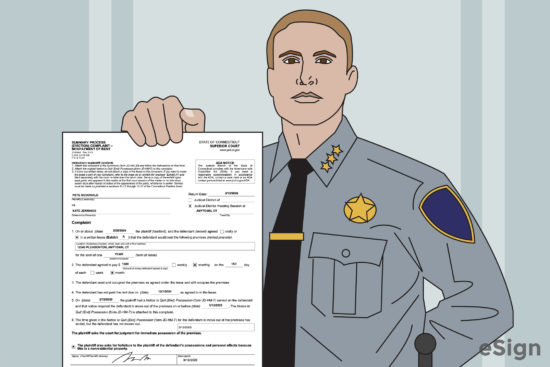
Step 5 – Appearance and Answer
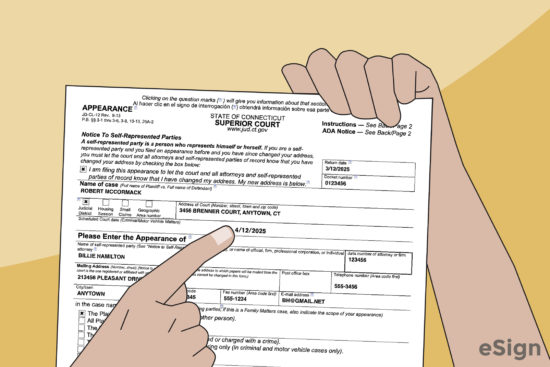
It is the tenant’s duty to respond to the Summons and Complaint by filing an Appearance (Form JD-CL-12) and a Summary Process Answer to Complaint (Form JD-HM-5) with the court no later than two days after the return date.
The landlord must receive copies of these forms, and if the tenant believes the landlord has no right to evict them, the landlord must complete and file a Reply to Special Defenses (Form JD-HM-16).
Step 6 – Default Judgment (If Applicable)
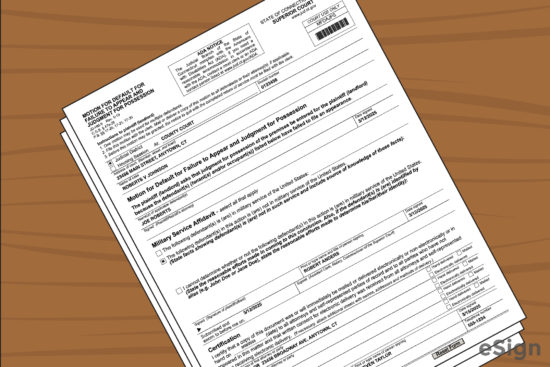
Step 7 – Trial
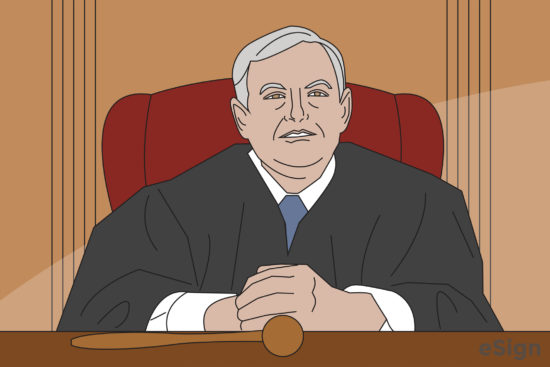
Step 8 – Judgment
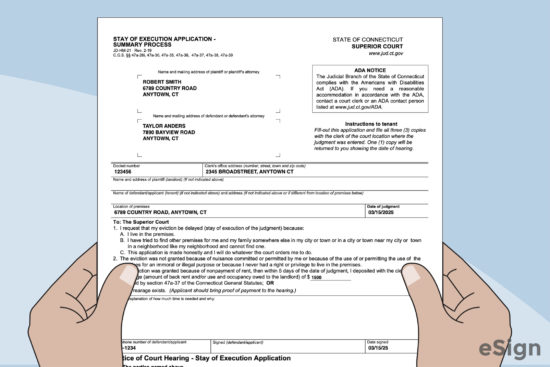
If the judge rules in favor of the landlord, either by trial or default judgment, the tenant has five days to vacate the property. However, the tenant may still be able to file a Stay of Execution Application (Form JD-HM-21), which asks the court to hold a hearing to enable them to stay an additional three to six months.
Step 9 – Execution for Possession
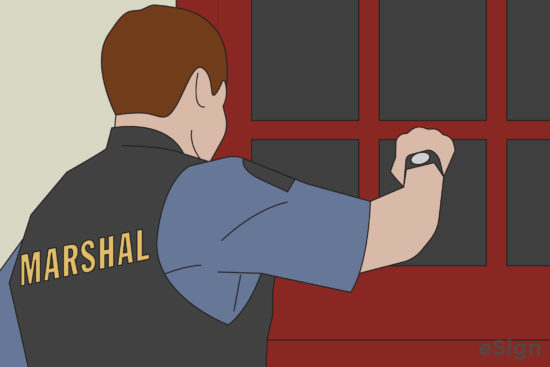
If the tenant doesn’t leave in time, the landlord must file a Summary Process Execution (Form JD-HM-2) and, if applicable, an Affidavit of Non-Compliance (Form JD-HM-22).
These forms must be sent to the tenant by the state marshal notifying them that they have 24 hours to vacate or they will be physically removed from the property by a marshal.
Court Forms + Resources
Forms
- Affidavit of Non-Compliance (Form JD-HM-22)
- Signed by: Landlord, Clerk or Notary, and Server
- Appearance (Form JD-CL-12)
- Signed by: Tenant and Server
- Complaint – Nonpayment of Rent (Form JD-HM-8)
- Signed by: Landlord
- Complaint – Termination of Lease by Lapse of Time (Form JD-HM-20)
- Signed by: Landlord
- Motion for Default for Failure to Appear and Judgment for Possession (Form JD-HM-9)
- Signed by: Landlord and Server
- Motion for Judgment for Possession for Failure to Plead (Form JD-HM-10)
- Signed by: Landlord
- Motion for Judgment by Stipulation (Form JD-HM-13)
- Signed by: Landlord and Tenant
- Reply to Special Defenses (Form JD-HM-16)
- Signed by: Landlord
- Right to Counsel Notice
- Signed by: N/A
- Stay of Execution Application (Form JD-HM-21)
- Signed by: Tenant and Assistant Clerk
- Summary Process Answer to Complaint (Form JD-HM-5)
- Signed by: Tenant
- Summary Process Execution (Form JD-HM-2)
- Signed by: Court Clerk and State Marshal
- Summons (Form JD-HM-32)
- Signed by: Landlord and Court Clerk
Resources

